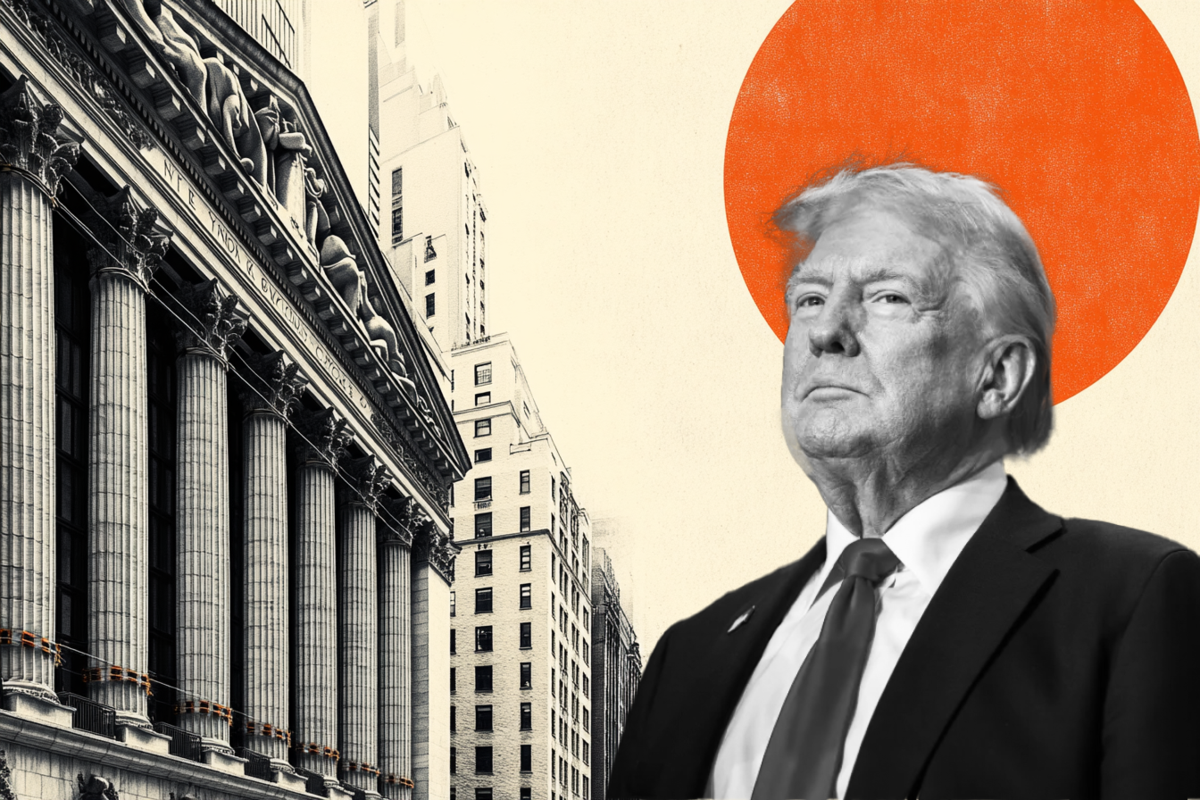He is back: Investors duck for cover, donning trade war helmets

Markets
Asia kicks off what promises to be a wildly volatile trading day on Monday as markets absorb the full impact of President Donald Trump’s tariff blitz on Mexico, Canada, and China. This wasn’t a shock—it’s been telegraphed for weeks—but investors will still feel the jolt as markets adjust to a move almost universally seen as damaging to global growth and financial stability.
A tidal wave of ‘risk-off’ sentiment could slam into markets, putting pressure on Asian equities as local stock futures are already pointing to lower opens. At the same time, Bitcoin has slid 3%, caught in the broader rush away from risk.
Meanwhile, the U.S. dollar is flexing its muscles, leaping to a 22-year high against the Canadian dollar, pulling the euro closer to parity, and tightening the screws on global FX markets. Gold is primed to break into fresh record highs, but U.S. Treasuries could be caught in a tug-of-war between safe-haven demand and the inflationary fallout of Trump’s tariffs.
The White House has confirmed that 25% duties on imports from Mexico and Canada and a 10% tariff on Chinese goods will take effect on February 2. But the biggest unanswered questions remain: How long will these duties last, and what will it take to roll them back?
With Canada already retaliating with tariffs, all eyes now turn to China, which reopens after the Lunar New Year holidays. Beijing's response will be a significant test for markets, and the yuan’s fixing could provide an early clue.
Currency markets are already flashing red flags of volatility, and equities and bonds are about to join the party. Wall Street had largely shrugged off these tariff threats as high-stakes posturing—a negotiation tactic aimed at tightening border controls, curbing immigration, or forcing an early USMCA renegotiation.
But if these measures turn out to be more entrenched and invasive than expected, markets could be in for a nasty wake-up call. This isn’t just about trade—it’s about fueling a consumer price inferno that could scorch purchasing power and hammer economic growth.
If these tariffs stick, expect a domino effect—higher inflation, tighter financial conditions, and fresh downside risks that could send shockwaves through global markets. What started as brinkmanship may just morph into a full-blown economic battleground.
Strap in—this is just the beginning.
Forex traders in whack-a-mole mode
Since trade surpluses are at stake, the most consequential market moves will undoubtedly occur in currency markets. The countries in the firing line—Canada, Mexico, and China—will take the bulk of the initial heat. Still, FX traders will quickly pivot to Whack-A-Mole mode and hammer any currency with a sizable trade surplus with the US.
The ASEAN currency basket is likely to feel an outsized impact. These economies are uniquely intertwined with China’s inward and outbound supply chains, making them highly vulnerable to the fallout. Whether it's the dong, the sing dollar ringgit, or the baht, the Whack-A-Mole hammer is coming.
This isn’t just trade war fallout—it’s a full-blown currency war in the making, where market forces, policy intervention, and retaliatory actions collide unpredictably. Expect extreme FX volatility as traders race to price in the shifting trade landscape.
The sheer economic scope of this tariff barrage makes it a game-changer. It falls at the uber-hawkish end of the trade war spectrum. Unlike the $360 billion worth of imports targeted in Trump’s first term, this latest tariff tsunami could slam into over $1.3 trillion in trade, sending shockwaves through global markets and supply chains.
From a currency standpoint, my ballpark math still suggests that the initial FX moves are underpriced, likely because of stretched, long-dollar positioning. But if these tariffs stick around for several months, there’s little doubt that the CAD and MXN will crater to new historic lows as the full weight of trade disruptions and capital flows plays out.
For now, the European Union may have dodged the first tariff barrage, but that doesn’t mean it’s in the clear. President Trump has repeatedly targeted the EU’s trade surplus with the U.S. If past behaviour is any indication, it’s only a matter of time before Brussels gets dragged into the tariff crossfire.
Germany has the third-largest deficit in U.S. bilateral trade balances, trailing only China and Mexico. Given how aggressively the Trump administration executes election promises, it’s hard to imagine the EU escaping the unscathed tariff dance.
FX markets aren’t waiting around to find out—the EUR/USD has already slipped below 1.0250, pricing in the risk that the U.S. could soon turn its tariff guns toward Europe. If that happens, expect the euro to take another hit as traders brace for yet another trade-driven currency shakeup.
This isn’t just another round of tariffs—the dollar is the economic wrecking ball with far-reaching consequences.
Author

Stephen Innes
SPI Asset Management
With more than 25 years of experience, Stephen has a deep-seated knowledge of G10 and Asian currency markets as well as precious metal and oil markets.

















